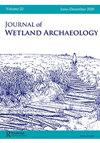萨默塞特荒原后罗马考古的生态背景(英国英格兰西南部)
Q1 Arts and Humanities
引用次数: 3
摘要
与广泛报道的萨默塞特沼泽和高地的湿地史前史研究相比,英格兰西南部这一地区历史时期的湿地考古学一直不太为人所知,主要依赖于非湿地信息来源,如文献证据、地图研究和从旱地考古遗址得出的推断。这项研究试图通过概述过去15年从Godney Moor获得的孢粉学和放射性碳证据来纠正这种不平衡,这些证据表明,至少在该地区的某些地方可能存在古环境证据。此外,强调了20世纪40年代至50年代早期研究的数据,如果根据最近的知识进展重新检查这些发现,将表明在以前的研究中可以识别出更多的后罗马时期的古环境信息。本文章由计算机程序翻译,如有差异,请以英文原文为准。
An Ecological Context for the Post-Roman Archaeology of the Somerset Moors (South West England, UK)
Abstract In contrast to the widely reported research into the wetland prehistory of the Somerset Moors and Levels, the wetland archaeology for the historic periods of this region of south west England has always been less well known, being reliant on mostly non-wetland sources of information, e.g. documentary evidence, cartographic studies and inferences made from dry land archaeological sites. This study attempts to correct this imbalance by outlining palynological and radiocarbon evidence obtained in the last fifteen years from Godney Moor that suggests that palaeoenvironmental evidence may survive in at least certain parts of the region. Furthermore, data from an earlier study made in the 1940–50s are highlighted that would indicate more palaeoenvironmental information can be discerned for the Post-Roman period in previous studies if these findings are re-examined in the light of recent advances in knowledge.
求助全文
通过发布文献求助,成功后即可免费获取论文全文。
去求助
来源期刊

Journal of Wetland Archaeology
Arts and Humanities-Archeology (arts and humanities)
CiteScore
1.40
自引率
0.00%
发文量
6
期刊介绍:
The Journal of Wetland Archaeology publishes a wide range of contributions in all fields of wetland archaeology. It includes scientific and methodological features, geoprospection, environmental reconstruction, wetland hydrology, cultural aspects of wetland archaeology, as well as conservation, site management, legislation, and site protection. All periods and all geographic regions are covered.
 求助内容:
求助内容: 应助结果提醒方式:
应助结果提醒方式:


